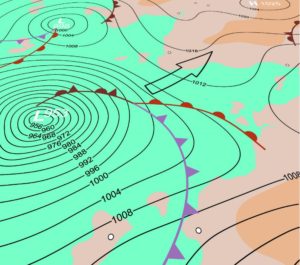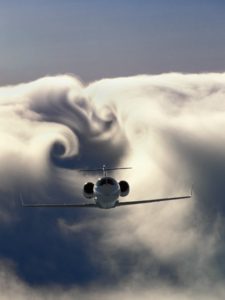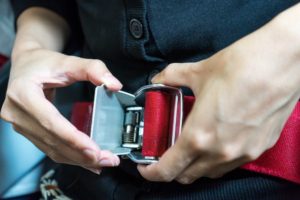This month, Captain Lim Khoy Hing discusses turbulence and ways passengers can overcome it.

Image: Travel 3Sixty
The fact is: turbulence is an unavoidable part of flying, and is not a concern when passengers have their seat belts securely fastened.
Turbulence is usually caused by unstable air in the atmosphere, and going through it can be likened to what passengers on a bus travelling on a pothole-ridden road experience. There are various conditions that can cause turbulence, such as hot air rising from the warm earth, or jet stream (a narrow band of strong wind) at higher altitudes. Turbulence can also be the result of mountain waves – when wind blows across uneven surfaces of the earth.
Whatever the cause, a plane flying through a mass of unstable air will inevitably be subjected to uncomfortable motions, much like an ocean liner sailing rough seas.
A pilot is normally informed of the turbulence forecast by the ‘shear rate’ in the flight plan. For instance, a shear rate of ‘1 to 4’ indicates light turbulence, ‘5 to 9’ means moderate turbulence, while 10 and above shows severe turbulence.

However, the turbulence forecast is sometimes not completely accurate. On several occasions when I had received a forecasted shear rate of 10, I only experienced mild turbulence in reality. Since the turbulence forecast is much like the weather forecast –not an exact science – pilots advise their passengers to have their seat belts fastened whenever they are seated, even when the seat belt sign is off.
When turbulence is expected, the pilot will switch on the seat belt sign, reduce aircraft speed, request for a change of altitude level or route, and make an onboard announcement requesting everyone to be seated; service of hot meals and beverages will also be suspended.
Coping with the Challenge
It is not surprising that many travellers experience some degree of anxiety in turbulent flying conditions. Such travellers can seek assistance from fear of flying clinics that employ various techniques to help anxious flyers make their journey more enjoyable.
One technique is to reserve a seat that is closer to the front of the aircraft or nearer the wings – two areas on the plane where turbulence is lesser felt. Think of riding a bus on an uneven road … you would feel the bumps most if you are seated at the back; it is the same when flying. And if you are seated near the aircraft’s wings, you are closer to the centre of gravity where, like the centre point of a seesaw (fulcrum), motion is minimum.
Psychology can also be used to overcome your nervousness; visualisation exercises are actually practised in fear of flying courses, where participants are asked to describe a positive flying experience and verbalise happy thoughts aloud in class.
Personally, I feel the best way to cope with turbulence anxiety is to arm yourself with knowledge. A plane’s wings are incredibly strong; make an effort to read up on the resilience of an aircraft’s wings in turbulent conditions. During the development of an airplane, the wings are bent several metres in a test structure to ensure they fulfil the certified standards. If you have a window seat on a flight, you might notice the wing tip flex a little or momentarily move up and down. Do not worry, the wings are designed to do just that!
Wake Turbulence

Image: Travel 3Sixty
Smaller aircraft trailing behind large planes (for example an Airbus A380) are sometimes affected by wake turbulence – a type of atmospheric disturbance that forms behind an aircraft when it passes through the air; the strength of wake turbulence depends on the weight and air speed of the leading aircraft. To offset this effect, aviation authorities have imposed specific spacing between planes.
Wake turbulence does not last long, and dissipates after a while. The FAA (Federal Aviation Administration) recommends a spacing of at least three minutes between aircraft to ensure a sufficient safety margin.
There are some guidelines for pilots – a medium weight airplane should remain three minutes behind the plane in front of it, while a light aircraft should stay four minutes behind. The necessary spacing between aircraft is less stringent during the take-off phase.
Buckle Up

Image: Travel 3Sixty
To some air travellers, turbulence is simply a mild discomfort that is part and parcel of flying, but to others, it can be troubling. The golden rule to follow is to have your seat belt securely fastened at all times when you are seated, even in the best of flying conditions.
On that note, I wish you a safe and smooth flight, on all your journeys through the skies!
Posted: 05.05.18